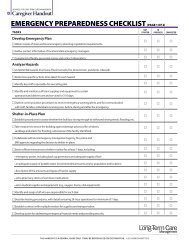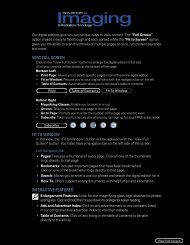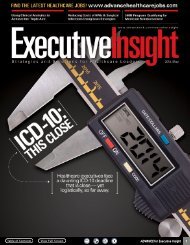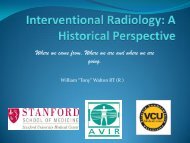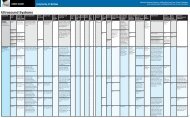ADVANCE for Executive Insight 1 ADVANCE for Executive Insight
ADVANCE for Executive Insight 1 ADVANCE for Executive Insight
ADVANCE for Executive Insight 1 ADVANCE for Executive Insight
- No tags were found...
Create successful ePaper yourself
Turn your PDF publications into a flip-book with our unique Google optimized e-Paper software.
VAP<br />
Cost Implications of VAP<br />
An equation developed by Johns Hopkins helps administrators quantify potential savings by<br />
reducing hospital-acquired infections. By Gail O. Guterl<br />
advance<br />
peer<br />
reviewed<br />
PR<br />
Gail O. Guterl is an editor and<br />
freelance medical writer.<br />
It would be utopia if quality patient care was<br />
the only engine driving healthcare today.<br />
The reality is a facility must generate profit<br />
to keep its doors open. But what if you could<br />
do both?<br />
Some expenditures can’t be avoided, but reducing<br />
hospital-acquired infections could be a<br />
big cost saver — especially now that the Centers<br />
<strong>for</strong> Medicare and Medicaid will not reimburse<br />
<strong>for</strong> many of these preventable complications.<br />
One of the most common hospital-acquired<br />
infections is ventilator-associated pneumonia<br />
(VAP), affecting about 250,000 people annually.<br />
It is also one of the most expensive, costing anywhere<br />
from $12,000 to $40,000 to treat one hospital<br />
case and with a 60 percent mortality rate. 1,2<br />
Each year in the U.S. a conservative estimate of<br />
collective VAP infections costs a whopping $3<br />
billion.<br />
Any way you approach it, reducing VAP could<br />
markedly impact the bottom line and, most importantly,<br />
improve patient care.<br />
PROBLEMS & SOLUTIONS<br />
Understanding the problem is the first step to<br />
elimination. VAP is defined as pneumonia that<br />
occurs more than 48 hours after a patient has<br />
been intubated and has been receiving mechanical<br />
ventilation. For every day on a ventilator, the<br />
risk of VAP increases from 1 to 3 percent, said<br />
Sean M. Berenholtz, MD, MHS, FCCM, physician<br />
director of Inpatient Quality and Safety,<br />
Armstrong Institute <strong>for</strong> Patient Safety and Quality,<br />
Johns Hopkins Medicine, Baltimore.<br />
Be<strong>for</strong>e expensive treatment <strong>for</strong> VAP can even<br />
begin, diagnosis itself can be costly, including<br />
aggressive patient surveillance, bedside examination,<br />
X-rays and laboratory analysis of respiratory<br />
secretions.<br />
Believing prevention is achievable, researchers<br />
at the Armstrong Institute decided to tackle<br />
the issue head-on. The result: a five-point initiative<br />
that has virtually eliminated VAP in numerous<br />
hospitals, including 65 Michigan facilities<br />
that were part of the Keystone ICU project<br />
<strong>ADVANCE</strong> <strong>for</strong> <strong>Executive</strong> <strong>Insight</strong><br />
31



